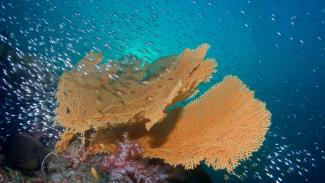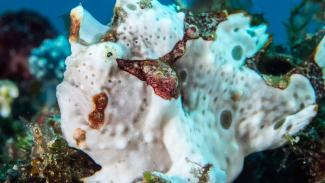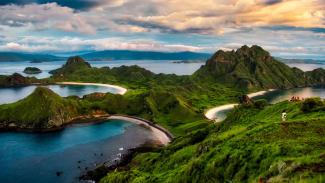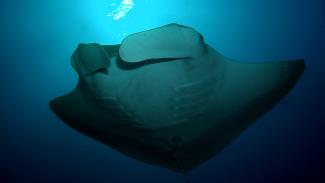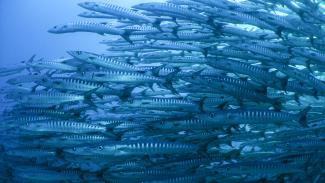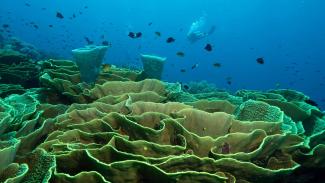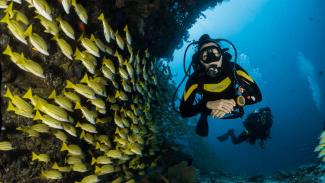
Sebastian Pena Lambarri
The Banda Sea is a deep sea ringed by islands in eastern Indonesia. Right in the middle of the sea are the Banda Islands, while Ambon lies to the north.
While they may seem incredibly remote, they were once world famous as the Spice Islands, where nutmeg & mace - much sought after in those days - were grown & fought over by colonial powers.
Nowadays, they are more famous for their plentiful underwater wonders & laidback island charm. Ambon offers exceptional opportunities for underwater photographers, while the more remote dives sites of the Banda Sea are increasingly popular with liveaboards.
Highlights
Best diving spots
The seven main islands and numerous smaller islets that make up the Banda Islands have some truly excellent diving. Palau Ai has plunging walls and excellent pelagics, including numerous species of larger shark. Skaru is a small atoll just off the main Hatta Island that often has a bewildering profusion of fish & colours, including huge schools of Snapper & Fusliers. Pelagic action is also common here and the nutrient rich waters feed majestic corals & sponges. The pinnacles around Batu Kapal make for an excellent dive too.
The main island of Banda Neira is a great place to find mating Mandarinfish at dusk, which are reportedly far less bashful than at other locations. The reefs fringing Gunung Api, with their tapestry of delicate table corals, have been a revelation to scientists. Gunung Api is an active volcano that last erupted in 1988, covering the reefs in lava and destroying everything in their path. Miraculously though, the reefs have recovered faster than experts ever thought possible and the area is now home to some of the most impressive hard coral structures that you will find anywhere in the world. This site has a huge concentration of Banded & Olive Sea Snakes too.
There is also superb diving elsewhere in the Banda Sea. The 5 small atolls of Lucipara are a turtle nesting ground and have excellent diving, with walls plunging down to over a kilometre. There are occasional sightings of Mola Molas, or Sunfish here. Just off the eastern coast of Seram island at the northern end of the Banda Sea is Koon Island. Despite strong currents and lower visibility, this site is a popular very Liveaboard stop. In addition to the profusion of fish life here, numerous sharks & even whales are known to cruise, including large Killer Whales.
Also in the north of the Banda Sea, Ambon is one of Asia’s finest muck-diving spots. In this large bay, you can find the endemic Ambon Scorpionfish, Halimeda Ghost Pipefish, Thorny Seahorses, Mandarinfish, Frogfish and many more fascinating critters for macro-lovers to search for. Just a short distance from Ambon, Nusa Laut has beautiful corals and excellent reef life - a tribute to the locals, who take great pride in their healthy reefs.
We recommend the team at Liveaboard.com to find your perfect Banda Sea liveaboard adventure.
When to dive
The conditions in the Banda Sea mean it is difficult to dive for parts of the year. Liveaboards tend to focus on the area in two sweetspots. The first is in April and May, while the second window is October and November. The best season to dive Ambon is from October through to May. Muck diving enthusiasts can also dive in AMbon Bay in September and June.
Getting there
Ambon is generally the jumping off point for diving adventures in the Banda Sea, with direct daily flights from Jakarta. There are also connections to Sorong, the entry point to the Raja Ampat region.
Activities
Ambon is a well populated island with plenty to do aside from scuba diving. Nature lovers may enjoy hot springs and waterfalls, while there is interesting history and also local festivals to get involved with.
Did you know?
This region is famous as the Spice Islands and were fought over by the British, Dutch and Portuguese back in the 1600's. Find out more on this fascinating region on Wikipedia.


